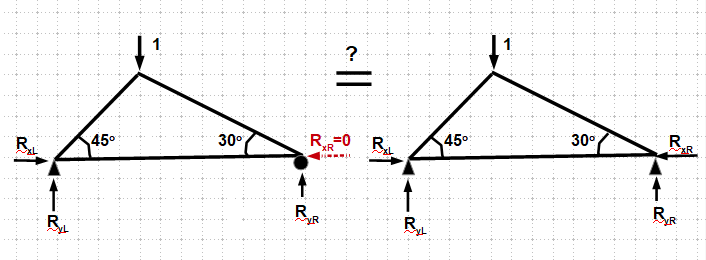For a stable structure, there is only one set of solutions corresponding to the applied loads. You made mistake in performing the calculation on an undetermined truss system using the method for determinate, simply supported truss. Here is a simple demonstration of the two systems (determined and undetermined) with the question - are they yield the same results.

The answer is "NO", the results, for the two systems that have different support types, are different. So what is missing?
Your truss system has 4 unknown reactions (same as the right side sketch above) with only three known equilibrium equations, so this truss system is structurally indeterminate to the first degree.
In order to solve this system accurately, you need to write a displacement compatibility equation (a condition) by:
make it a structurally determined, yet stable, system by releasing one support restrain (in this case, the horizontal restrain at either support), and perform the analysis (as you did).
calculate the lateral displacement of the support, which was released of horizontal restrain, using the member forces obtained.
with the applied load removed, apply a unit horizontal load on the released support and calculate the member stress and displacement of the support.
From step 3 above, you can apply the close-the-gap concept and superimpose the results of the analyses to arrive at the correct answer.





